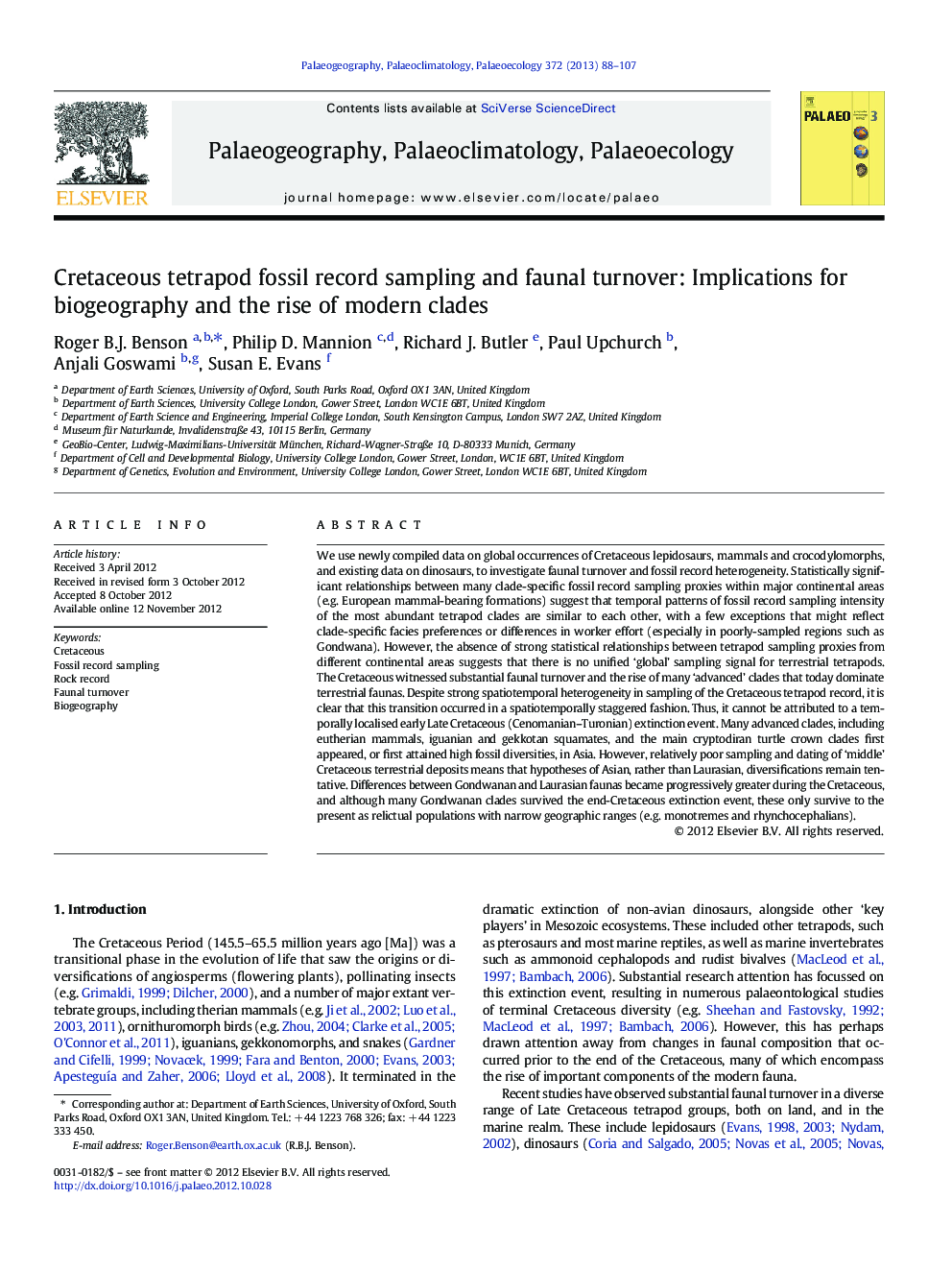| Article ID | Journal | Published Year | Pages | File Type |
|---|---|---|---|---|
| 4466628 | Palaeogeography, Palaeoclimatology, Palaeoecology | 2013 | 20 Pages |
We use newly compiled data on global occurrences of Cretaceous lepidosaurs, mammals and crocodylomorphs, and existing data on dinosaurs, to investigate faunal turnover and fossil record heterogeneity. Statistically significant relationships between many clade-specific fossil record sampling proxies within major continental areas (e.g. European mammal-bearing formations) suggest that temporal patterns of fossil record sampling intensity of the most abundant tetrapod clades are similar to each other, with a few exceptions that might reflect clade-specific facies preferences or differences in worker effort (especially in poorly-sampled regions such as Gondwana). However, the absence of strong statistical relationships between tetrapod sampling proxies from different continental areas suggests that there is no unified ‘global’ sampling signal for terrestrial tetrapods. The Cretaceous witnessed substantial faunal turnover and the rise of many ‘advanced’ clades that today dominate terrestrial faunas. Despite strong spatiotemporal heterogeneity in sampling of the Cretaceous tetrapod record, it is clear that this transition occurred in a spatiotemporally staggered fashion. Thus, it cannot be attributed to a temporally localised early Late Cretaceous (Cenomanian–Turonian) extinction event. Many advanced clades, including eutherian mammals, iguanian and gekkotan squamates, and the main cryptodiran turtle crown clades first appeared, or first attained high fossil diversities, in Asia. However, relatively poor sampling and dating of ‘middle’ Cretaceous terrestrial deposits means that hypotheses of Asian, rather than Laurasian, diversifications remain tentative. Differences between Gondwanan and Laurasian faunas became progressively greater during the Cretaceous, and although many Gondwanan clades survived the end-Cretaceous extinction event, these only survive to the present as relictual populations with narrow geographic ranges (e.g. monotremes and rhynchocephalians).
► We examine the implications of sampling bias in Cretaceous tetrapods. ► Major continental areas have idiosyncratic patterns of fossil record sampling. ► Intracontinental patterns of fossil record sampling are similar among major clades. ► Increasing endemism is evident throughout the Cretaceous. ► Most major extant clades originated in Laurasia.
